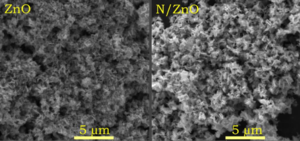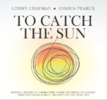
A novel and simple wet chemical hydrothermal synthesis method was employed in the preparation of zinc oxide (ZnO) nanoparticles using neem (N), pepper (P) and turmeric (T) extracts as solvent media. The structural and optical properties as well as the antibacterial and anticancer properties of all the samples (ZnO, N/ZnO, P/ZnO, T/ZnO and NPT/ZnO) were characterized and analyzed. Solvent media was found to have an effect on both the size and the morphology of the nanoparticles, which in turn effected their optical and cytotoxic properties. The colony forming unit (CFU) assays were done for E. coli, S. aureus and S. typhi in which T/ZnO (~2) and P/ZnO (~3) showed a remarkable effect on S. aureus for 100 µg/ml and nearly zero for 150 µg/ml. The zone of inhibition (ZoI) was measured for S. agalactiae, S. dysgalactiae and S. pyogenes. The results showed that S. dysgalactiae is more sensitive to N/ZnO. Finally, the anticancer properties of these compounds towards prostate cancer cells was investigated. Among the active compounds T ZnO showed the highest activity with low IC50 value (37.751 µg/ml) followed by P ZnO (45.68 µg/ml).
Keywords[edit | edit source]
Nanostructures; Oxides; Chemical synthesis; Electron microscopy;bactericide; ZnO; zinc oxide; ZnO; anti-cancer compounds; neem; pepper; turmeric; antibacterial activity; nanomaterials; nanoparticles; natural extracts
See also[edit | edit source]
- Inhibition of growth of S. epidermidis by hydrothermally synthesized ZnO nanoplates
- Structural and optical characterization and efficacy of hydrothermal synthesized Cu and Ag doped zinc oxide nanoplate bactericides
- Environmental remediation of real textile dyeing wastewater under visible light and inactivation of pathogenic bacteria using ZnO/CuO nano-needles





